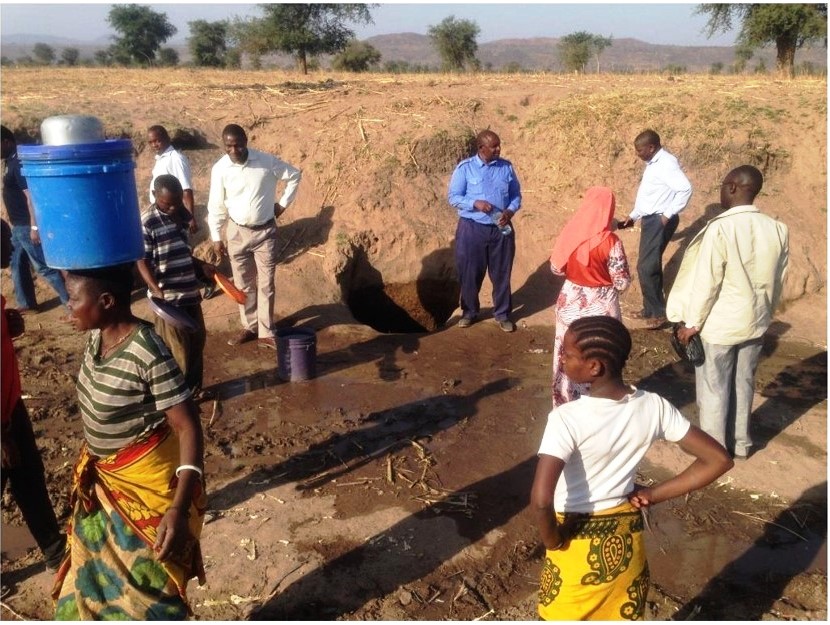As the rainy season begins, the Nigeria Centre for Disease Control (NCDC) has identified 83 local government areas as “hotspots” for cholera in the country.
The agency says three states, Bauchi, Kano and Zamfara, carry over 70 per cent of the burden of the disease in the country.
Cholera “hotspots” are places where the disease outbreak occurs on a regular basis.
Many people think of cholera as a 19th-century disease. But this is only true for high-income countries as many countries in Asia and Africa are still struggling to eradicate the disease.
In Nigeria, the disease never went away. Millions of Nigerians are at risk of contracting the disease and dozens die from cholera on a yearly basis.
The World Health Organisation (WHO) said cholera sickens approximately 2.9 million people every year and kills 95,000.
“The disease is endemic in more than 47 countries across the globe. In Africa alone, more than 40 million people live in cholera “hotspots” where outbreaks are (a) regular occurrence,” WHO said.
Cholera Surveillance
NCDC using a digital technology, the geospatial mapping, was able to identify and map out cholera “hotspot” locations across the country.
According to the mapping, 83 local government areas in the country were identified to have been consistently prone to cholera outbreaks in the last five years.
NCDC said it used data from 2012-2017 to analyse the cholera burden of Nigeria.
The agency said the data displays the spread of cholera outbreaks and also shows the relative risks of the various LGAs which have reported an outbreak during the five year period.
“We layered the 2018 outbreak data with the historical hotspot analysis to identify specific trends and possible overlaps. The result of the hotspot analysis identified 83 LGAs as hotspots, with 87 per cent reporting at least one case with over 70 per cent of the burden from Bauchi, Kano, and Zamfara states”.
NCDC said the map out would be useful at the start of the outbreak, as hotspot analysis helps determine where to vaccinate and what quantity of vaccines are required per LGA.
“The LGAs identified as hotspots have enabled the government to make informed decisions about where to request vaccines to ensure that the most vulnerable areas are supported.
“This exercise ensures the effectiveness of the oral cholera vaccine immunisation campaigns which are rolled out to stop the spread of disease,” it said.
Concerns for Nigerians health
NCDC said since January, 722 suspected cholera cases have been reported with 28 deaths reported in the country.
The figure, however, is expected to continue to increase during the raining season. This is due to the poor level of sanitation, open defecation, lack of clean water and ineffective waste disposal in the country. The disease is most common in places with poor sanitation, conflict zones and famine.
There have also been growing concerns for the health of millions of Nigerians, especially those living in the internally displaced persons’ camps.
The Norwegian Refugee Council (NRC) last month warned that Nigeria is moving close to a major cholera outbreak if urgent sanitary measures are not put in place at the IDPs in the North-east.
NRC said overcrowded camps, coupled with the shortage of sanitation and hygiene facilities, will cause another cholera outbreak in the country.
The area last year was ravaged by cholera, requiring the intervention of WHO and other international partners to contain the spread through the administration of cholera vaccines to the people in the camps.
The Boko Haram insurgency which led to insecurity has displaced over two million people. The majority of the population who fled from their homes are living in highly congested displacement sites which are well below international minimum standards.
The IDPs are not the only ones at risk of the disease in Nigeria. The disease is highly contagious and has caused hundreds of deaths across the country in the past few years.
Cholera is a waterborne bacterial disease that is caused by ingesting contaminated water or food. It causes diarrhoea and dehydration, which may be deadly if not treated immediately.
Safe and protected water sources and proper sanitation facilities are critical to prevent it from spreading.
Preventable Disease
Cholera is a preventable disease. The disease is vaccine-preventable but it is more cost effective to provide amenities such as good water source and toilets among others that will enhance healthy living.
According to WHO, the long-term solution for cholera control lies in economic development and universal access to safe drinking water and adequate sanitation.
WHO cholera team lead, Dominique Legros, said “vaccination will not solve the cholera problem but only buy us some time. Unless we plan mid and long- term water and sanitation interventions, cholera is going to reappear as soon as immunity to the vaccine wanes. there are no short cuts”.
NCDC said the disease has an incubation period of at least two hours which leads to dehydration and can kill within hours if untreated.
People with low immunity such as malnourished children or people living with HIV are at greater risk of death if infected. Reporting suspected cases early increases the chances of survival.



